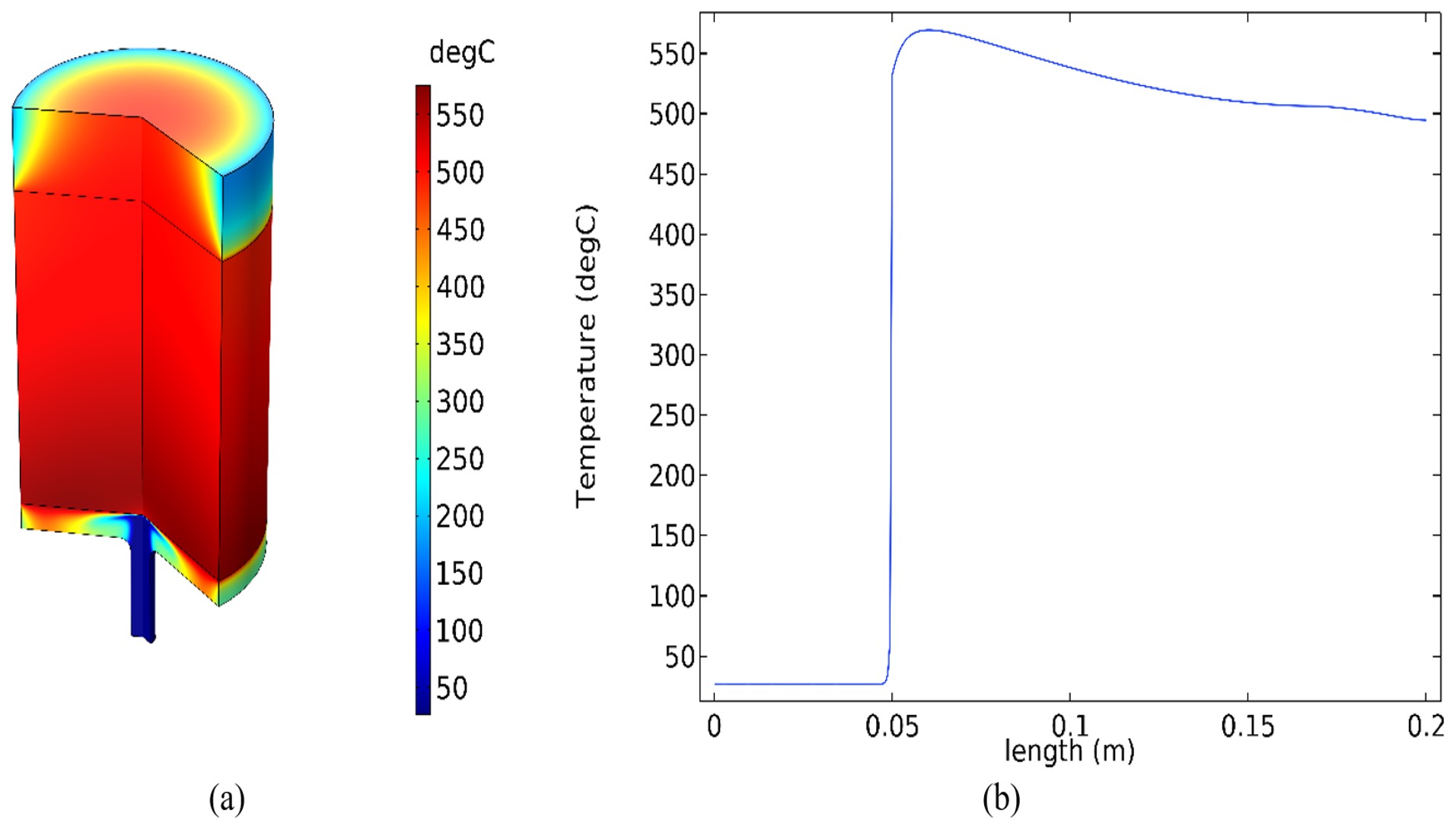Two-dimensional axisymmetric numerical study of the premixed combustion inside the porous media burner
Main Article Content
Abstract
Porous media combustion is one of the most efficient and has a wide-ranging application. Despite this, more investigation needs to be done in order to improve its efficiency and pollutant emission. In this research, the commercial simulation software is used to model and couple together the significant phenomena such as combustion, heat transfer, and fluid flow in porous media, which occur in this type of system. The free and porous media flow module was used to estimate fluid flow inside both fluid and porous media. Species formation and heat release during combustion were modeled by the transport of concentrated species module. Local thermal equilibrium was assumed for the energy equation and calculated by heat transfer in porous media module. Each physic was coupled together by two mechanisms—first, reaction flow, which coupled together between free and porous media flow and transport of concentrated species. Finally, nonisothermal flow coupled free and porous media flow with heat transfer in porous media. The combustion chamber, which is entirely filled with aluminum oxide pellets, is created for two dimensional axisymmetric. Physics-controlled mesh with finer element size is applied to generate mesh by the software to meet the specified need for each physic. Combustion behavior, velocity and temperature profile, and species formation are achieved from this simulation study.
Article Details

This work is licensed under a Creative Commons Attribution-NonCommercial-ShareAlike 4.0 International License.
This work is licensed under a Creative Commons Attribution-NonCommercial-ShareAlike 4.0 International License.
References
Takeno, T., Sato, K., Hase, K. A theoretical study on an excess enthalpy flame, Symposium (International) on Combustion, Vol. 18, 1981, pp. 465-472.
Weinberg, F.J. Combustion temperatures: the future?, Nature, Vol. 233, 1971, pp. 239-241.
Drayton, M.K, Saveliev, A.V., Kennedy, L.A., Fridman, A.A., Li, Y.E. Syngas production using superadiabatic combustion of ultra-rich methane-air mixtures, Symposium (International) on Combustion, Vol. 27, 1998, pp. 1361-1367.
Zhang, L., Xu, R., Jiang, P. Comparison of volume-averaged simulation and pore-scale simulation of thermal radiation and natural convection in high temperature packed beds, paper presented in 5th International Conference on Porous Media and Their Applications in Science, Engineering and Industry, 2014, Kona, Hawaii.
Sobhani, S., Haley, B., Bartz, D., Dunnmon, J., Sullivan, J., Ihme, M. Investigation of lean combustion stability, pressure drop, and material durability in porous media burners, paper presented in ASME Turbo Expo: Power for Land, Sea, and Air, 2017, North Carolina, USA.
Shi, J.R., Yu, C.M., Li, B.W., Xia, Y.F. Xue, Z. Experimental and numerical studies on the flame instabilities in porous media, Fuel, Vol. 106, 2013, pp. 674-681.
Zeng, K.L. Application & Manufacture of Porous Media Ceramics, 2006, Beijing Chemical Industry Press, China.
Franzelli, B., Riber, E., Sanjosé, M., Poinsot, T. A two-step chemical scheme for kerosene-air premixed flames, Combustion and Flame, Vol. 157(7), 2010, pp. 1364-1373.
Dryer, F.L. and Westbrook, C.K. Simplified reaction mechanisms for the oxidation of hydrocarbon fuels in flames, Combustion Science and Technology, Vol. 27, 1981, pp. 31-43.
Franzelli, B., Riber,E., Gicquel, L.Y.M., Poinsot, T. Large Eddy Simulation of combustion instabilities in a lean partially premixed swirled flame, Combustion and Flame, Vol. 159(2), 2012, pp. 621-637.
Deng, H., Huang, M., Wen, X., Chen, G., Wang, F., Yao, Z. Numerical investigation of premixed methane-air flame in two-dimensional half open tube in the early stages, Fuel, Vol. 272, 2020, pp. 117709.



